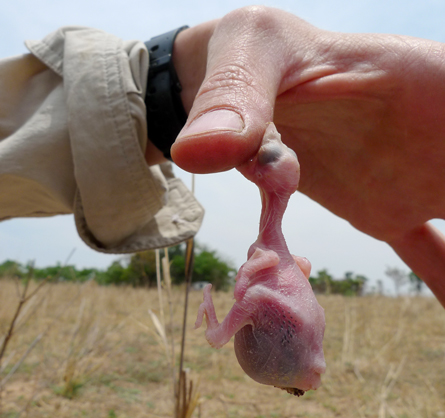Life
Killer baby birds, the secret to a glowworm’s gleam and more in this week’s news
Natural born killers
Recently hatched, still-blind honeyguide chicks have for the first time been captured on video attacking and killing their nestmates. The tropical birds are cuckoolike parasites, laying their eggs in other species’ nests and leaving the hapless foster parents to do the work of feeding the resulting honeyguide chick. On an egg-laying blitz, the mother honeyguide stabs host eggs already in the nest, increasing the chances that the parasite chick gets all the foster parents’ attention. Should a host egg hatch anyway, the honeyguide chick itself can make up for mom’s oversight, Claire Spottiswoode of the University of Cambridge in England and a colleague report online September 7 in Biology Letters. The young honeyguide, equipped with sharp spikes at its bill tip, grabs any new hatchling in a prolonged, shaking bite that causes fatal internal bleeding. —Susan Milius

Glow best, young worm
The intensity of a glowworm’s eerie light is controlled in part by a particular nitrogen-containing compound called octopamine, scientists at the University of Queensland in Australia have discovered. The worms, carnivorous larvae of the fly Arachnocampa flava, dangle from cave ceilings like strings of luminescent beads. Evidence suggested that the worm’s shine, which lures flying insects to a sticky death, was actively repressed during the day. Now experiments that included feeding the glowworms flies laced with different compounds suggest that octopamine plays a central role in releasing the worms’ light, the team reports in theOct. 1 Journal of Experimental Biology.—Rachel Ehrenberg
A snowball’s chance
Life could have survived global deep freezes 600 million to 800 million years ago by taking refuge in a narrow inland sea, a new modeling study suggests. Thick ice periodically covered almost all the world’s oceans during the so-called “Snowball Earth” period, raising questions about how surface algae managed to survive. Now, a team at the University of Washington in Seattle has found that under certain conditions ice would not have reached the end of a narrow inlet like the Red Sea, possibly allowing a last hold-out of life to squeak through the cold times. The work will appear in an upcoming Geophysical Research Letters. —Alexandra Witze
Heavens, it’s my wife
Male canaries, not (yet) renowned for social intelligence, are smart enough not to flirt enthusiastically with other females when their mates are watching. Research in creatures as diverse as field crickets and guppies has already introduced the idea that audiences can matter to an animal. Aggressive behavior shifts according to who’s watching, but less is known about male-female matters, say researchers at Université Paris Ouest Nanterre La Défense in France. Male canaries adjusted their aggression depending on the audience, but also kept an eye out for the mate when flirting, the researchers report online August 9 in PLoS ONE. —Susan Milius






